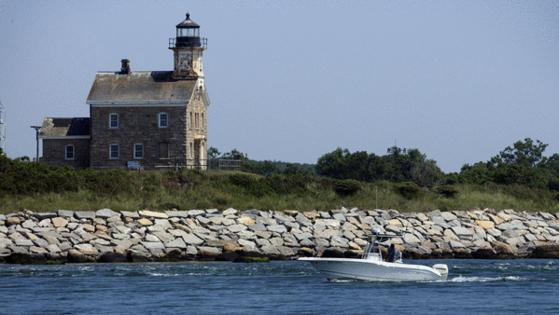Mysterious, sacred land in Long Island Sound, 'gem' of nature, up for monument status. Where it stands
Published in Science & Technology News
HARTFORD, Conn. — While it’s been slow, there’s definitely been progress in the efforts to preserve the mysterious island in the middle of Long Island Sound, say advocates on both sides of the body of water between Connecticut and New York.
The latest move is a bill in Congress sponsored by U.S. Rep. Nick LaLota, R-N.Y., who represents Long Island’s Suffolk County. The bill would declare the island, owned by New York state, a national monument.
A hearing on the bill was held in March by the House Natural Resources Subcommittee on Federal Lands. LaLota could not be reached for this story.
The alternative way to make the island a monument would be a presidential declaration.
In addition to its natural resources, the many species of birds and other wildlife, “We want to preserve it for its ecological values, the American history that can be told there and its affiliations, its cultural significance to the Montaukett Indian nation, which was here for 10,000 years, or their ancestors were,” said Louise Harrison, natural areas manager for Save the Sound.
“We know the Montaukett Indian nation would like to be able to visit Plum Island and practice certain cultural traditions and visit their sacred places. So we have a lot of good reasons to preserve Plum Island,” she said.
The 840-acre island, which sits 10 miles south of East Lyme, houses a U.S. Department of Agriculture animal disease center, which for years has been set to move to Kansas State University. There would need to be environmental cleanup once the lab, which is still working on a vaccine for foot and mouth disease, finally moves.
“The facility kept people off the island, which was really different from most of the Long Island Sound area, so it hasn’t had a lot of encroachment on much of the island, which has kept those habitats in really great shape,” said Holly Drinkuth, director of river and estuary conservation for The Nature Conservancy in Connecticut.
“And they still support the largest haul-out of seals, which is exciting, and all kinds of migratory shorebirds use Plum Island for their breeding area and stopovers on migration. It’s just really a jewel, that’s kind of the last of its type in the Northeast,” she said.
Plum Island is home to 227 species of birds, including piping plovers, roseate terns, Northern harriers, ospreys and American oystercatchers, according to Save the Sound’s Envision Plum Island Report.
...continued
©2024 Hartford Courant. Visit courant.com. Distributed by Tribune Content Agency, LLC.







Comments